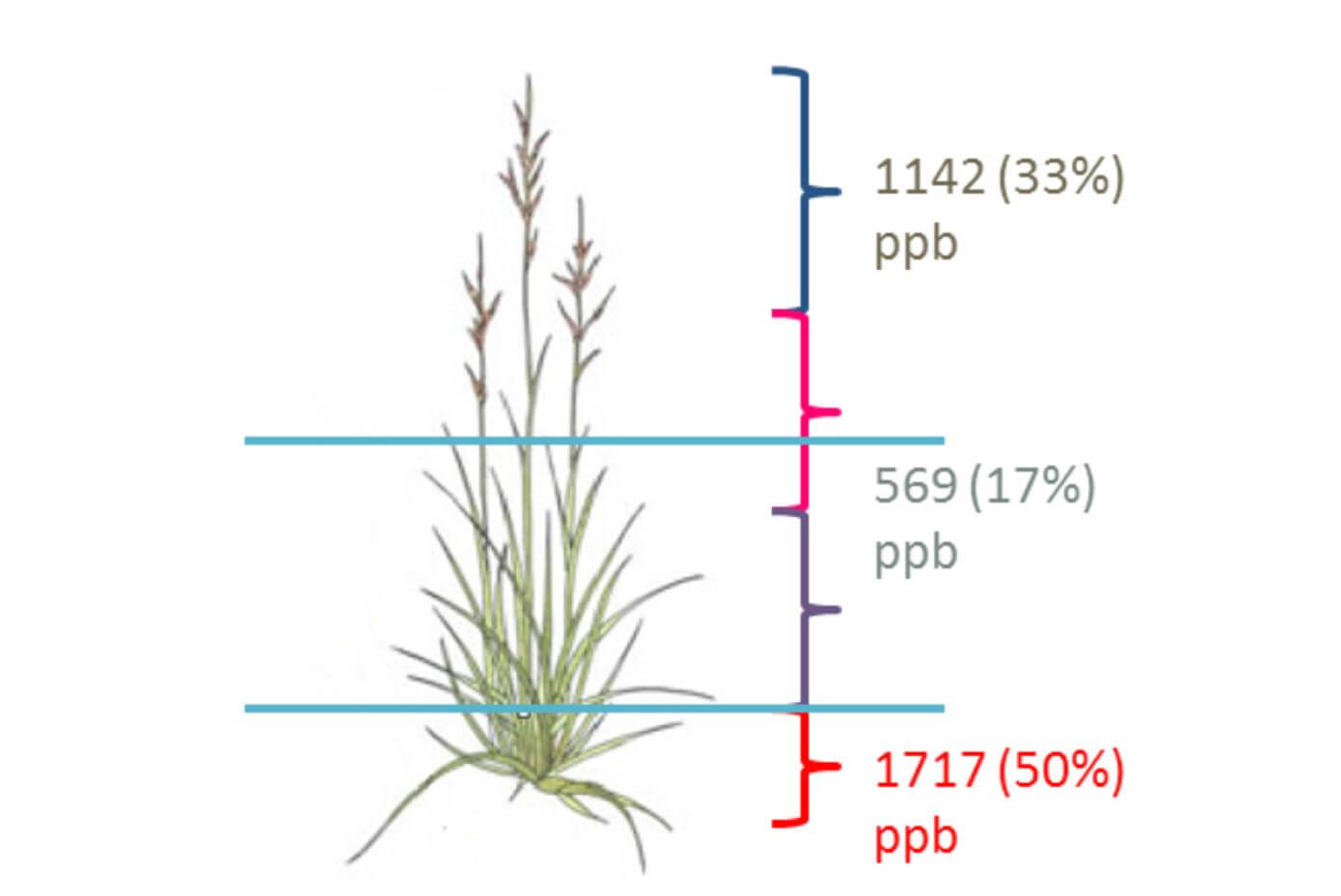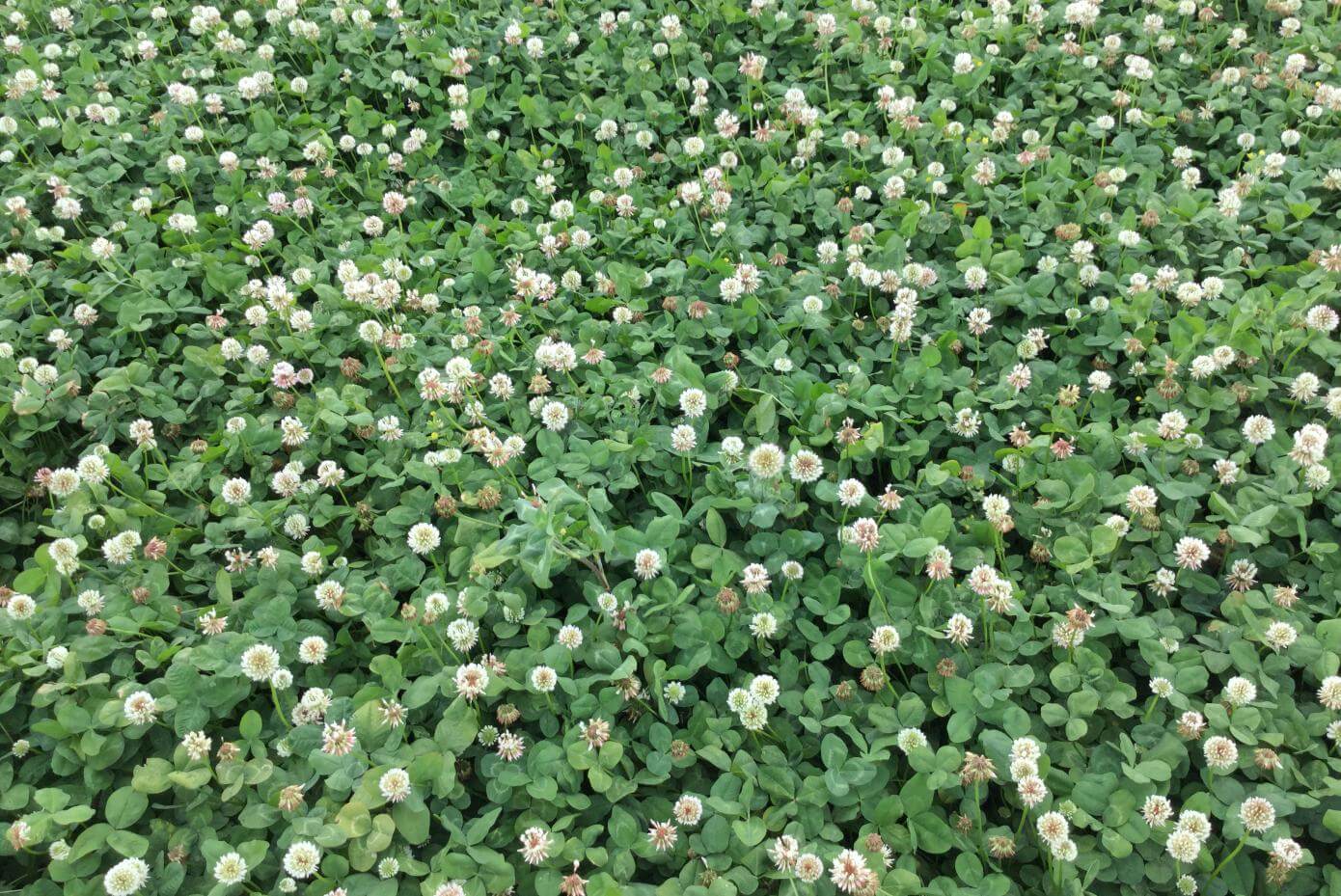The Secret Behind KY-31’s Stubborn Survivability
Have you ever wondered why KY-31 seems to survive longer than any other tall fescues - especially under grazing situations? The secret may lie in not just the fact that it has toxic endophyte ergovaline alkaloids, but maybe more related to exactly where those alkaloids reside. Work done by Erin Green in 2011, showed that the majority of the alkaloids reside near the bottom third of the plants (see graph). Dr. Ray Smith from U. of KY presented this data at the recent American Forage and Grasslands Conference in Baton Rouge, LA.
Dr. Smith explained that when livestock are grazing KY-31, the levels of alkaloids they ingest increase the lower they graze. If they have a choice, they will move on rather than graze these plants down to the ground. From the plant’s perspective, this is perfect, as the plant maintains sufficient foliage for regrowth with minimal to no stress near the crown. In contrast, when livestock graze endophyte-free plants, they are not inhibited from grazing as close to the ground as possible unless their grazing is managed by rotation or other means. These plants, contrary to the KY-31 plants can suffer severe defoliation and crown damage, both contributing to reduced stand longevity. See the difference?
When promoting or utilizing novel-endophyte fescues, as well as improved endophyte-free fescues, such as our widely-adapted Cajun II tall fescue, this information is critical. We are often asked if Cajun II will last as long as toxic KY-31. Our answer is simply, “it depends.” In a continuously grazed pasture, it will likely not last as long as KY-31 for the above reason. This will likely result in a shorter longevity. However, under managed grazing, producers will be able to realized the benefits of improved varieties, including better forage quality, higher palatability, increased digestibility, better animal reproductively, and greater animal gains. The benefits of improved tall fescues are well documented, but do require a different management strategy than KY-31. Learn more about Cajun II at CajunFescue.com.
Speaking of Pasture Solutions...
We are excited to announce the introduction of a new, unique white clover. Renovation White Clover is a new, long-lasting white clover that promises great performance for years to come. Renovation was bred for maximum stolon density, longer life, and greater animal performance. Renovation is ideal for livestock pastures, wildlife food plots, fescue toxicosis mitigation, slope stabilization, and perennial ground cover.
Developed by Dr. Joe Bouton, and released by the University of Georgia and The Samuel Roberts Noble Foundation, Renovation was bred using traditional nonGMO breeding methods, crossing naturally selected highly stoloniferous Southern Plain wild ecotypes with proven large-leafed ladino plants. Renovation will be available in limited supplies later this spring with more available by next winter. Distribution opportunities available. Look for more information soon.

